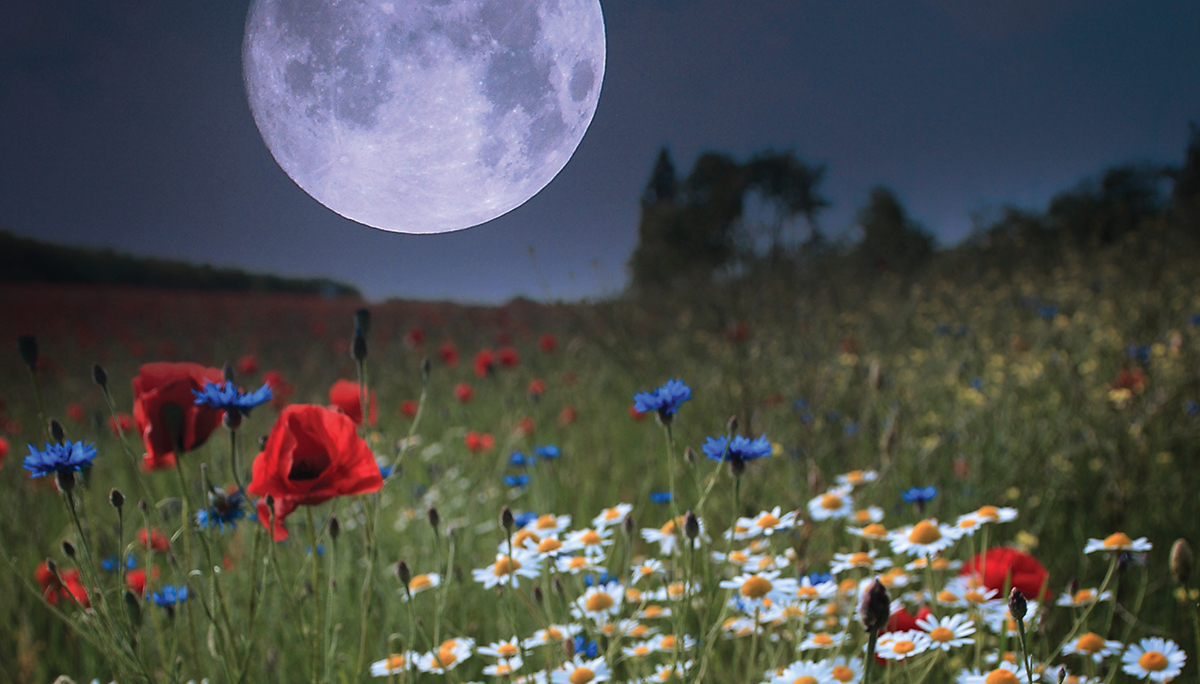Moon phase planting guides generations of gardeners
Katie Jackson
There was a full moon the other night, one so big and bright that I could almost read by it and it reminded me that my father had given me a copy of the Old Farmer’s Almanac for Christmas that I had not yet read. So I pulled it out and under lamplight (I’ve reached an age when moonlight requires a little extra help if I really want to see the pages) I began to thumb through it.
I love farmer’s almanacs of all kinds because they are chock full of interesting information that ties back to days of yore. But the information that I find especially intriguing is the advice they offer on planting by the moon and signs, age-old practices of using the phases of the moon and the Zodiac to determine the best time to plant crops and perform other agrarian activities—even mowing the lawn.
While there is much debate about how scientific and effective it is to use the moon and astrological signs as guides to planting and planning our gardens, there actually is some science behind the practices. After all, many of these practices were developed generations ago through close observation of seasonal changes in light, temperature and other forces of nature. Plus, the gravitational pull of the moon does affect tides so it stands to reason that, as the moon waxes and wanes, so does the availability of water in the soil and in the plants themselves.
While planting by the signs is different and somewhat more complicated to figure out than planting solely by the moon, both use the basic guideline that above-ground flowers and vegetables should be planted as the moon is waxing—from the day the moon is new to the day it is full. Underground crops such as bulbs and root vegetables should be planted as the moon is waning—from the day after it is full to the day before it is new again.
Want even more precision in the planting schedule? Each quarter phase of the moon cycle is also said to be better suited for certain crops or chores: leafy crops are best planted during the first quarter moon cycle, seed-containing crops such as tomatoes and beans should be planted during the second quarter, root crops and perennials should be planted during the third cycle and nothing should be planted during the fourth cycle, though this is an ideal time to weed, mow and treat for pests.
These guidelines only scratch the surface of the many nuanced practices that can be applied to our gardening calendars, including the tradition of planting summer vegetables on Good Friday (April 3 this year), so as you’re planning your 2015 garden, it may be fun (and possibly productive) to study up on these time-honored traditions. Get a copy of the Old Farmers or a similar annual almanac or do a little library or Web research (I found a particularly easy to follow guide at www.gardeningbythemoon.com) and try it for yourself.
If you’re truly wanting to be scientific about it, create your own experiment by planting part of your garden by the correct phases of the moon and another part by the incorrect moon phases and see what happens. And send me your results or any specific garden lore you’ve followed or heard through the years. It could plant the seed for a future column!
Katie Jackson is a freelance writer and editor based in Opelika, Alabama. Contact her at katielamarjackson@gmail.com.
[box]
March Gardening Tips
- Remove winter mulch from garden beds as the plants show signs of new growth.
- Divide and transplant summer-blooming perennials and fertilize established ones as soon as new growth appears.
- Transplant shrubs and trees early in March.
- Add any amendments (composted or processed manure, peat moss, compost, etc.) into your garden soil.
- Plant green peas, snow peas, asparagus, horseradish and artichokes early in the month.
- Plant eggplant, Brussels sprouts, cauliflower, celery, leeks, onions, early potatoes and radish seeds.
- Plant strawberries, blueberries, grapes and fruit trees.
- Sow seeds for tomatoes, lettuce, carrots and other spring vegetables.
- Prune or pinch back leggy house plants and begin fertilizing them with a diluted solution of plant food.
- Begin weeding garden or flowerbeds as soon as weeds emerge.
- Clean out birdhouses and feeders.
[/box]






